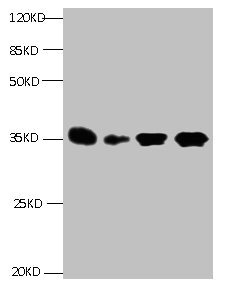The IGFBP1 monoclonal antibody is a mouse-derived IgG1 antibody that is specific to both the human and mouse IGFBP1 protein. It was generated by immunizing mice with recombinant human IGFBP1 protein and fusing the spleen cells with myeloma cells. The resulting hybridomas screened for the production of the IGFBP1 antibody were cultured to generate the desired antibodies. The harvested antibody was purified by protein G affinity chromatography to obtain the high-purity IGFBP1 monoclonal antibody. Its purity is over 95%. And its high specificity has been confirmed in ELISA and WB applications.
IGFBP1 is primarily produced by the liver and is involved in regulating glucose and lipid metabolism, as well as insulin sensitivity. It is also thought to have a role in regulating fetal growth during pregnancy. Additionally, IGFBP1 has been implicated in the pathogenesis of several diseases, including diabetes, obesity, and cancer.






